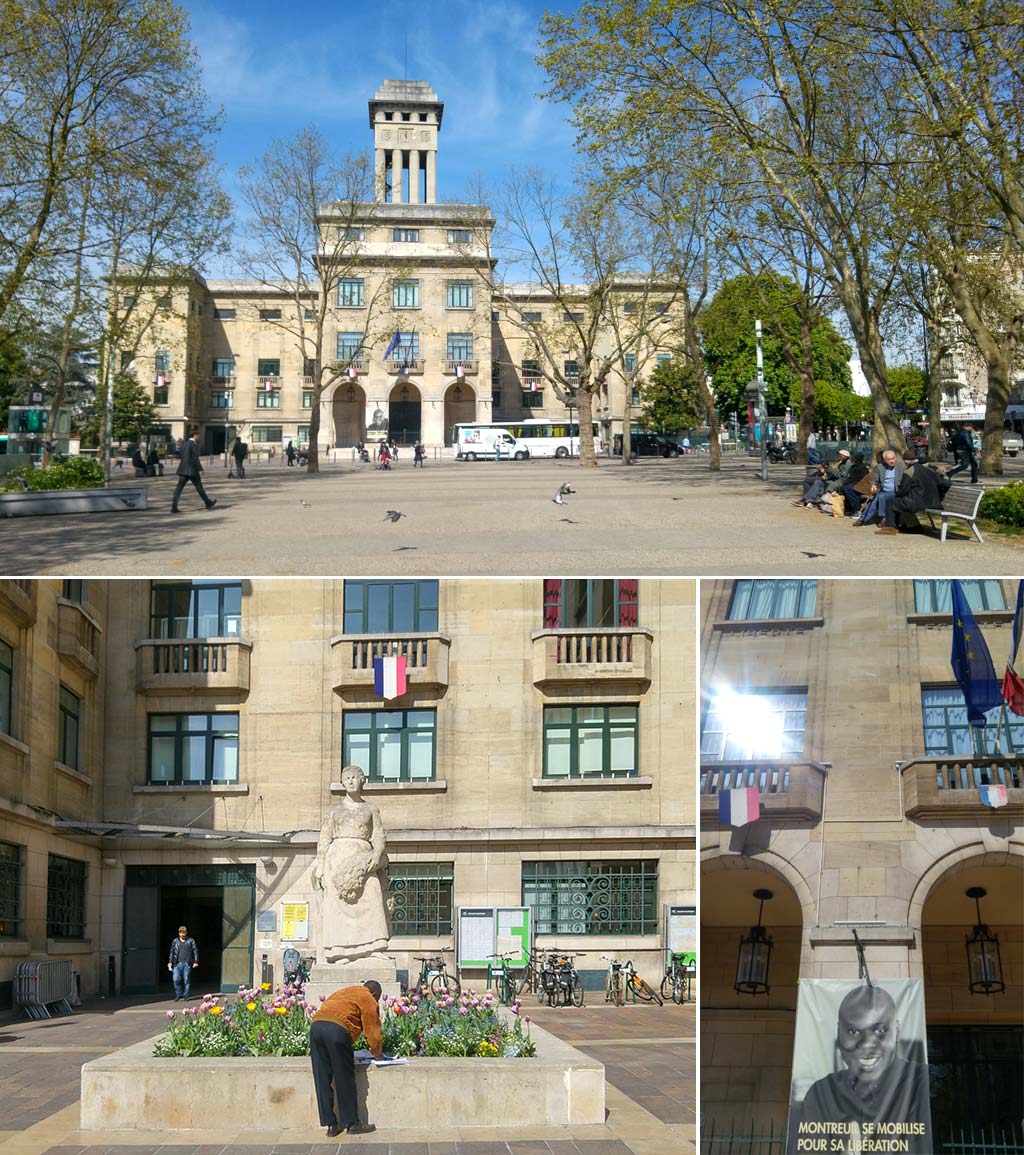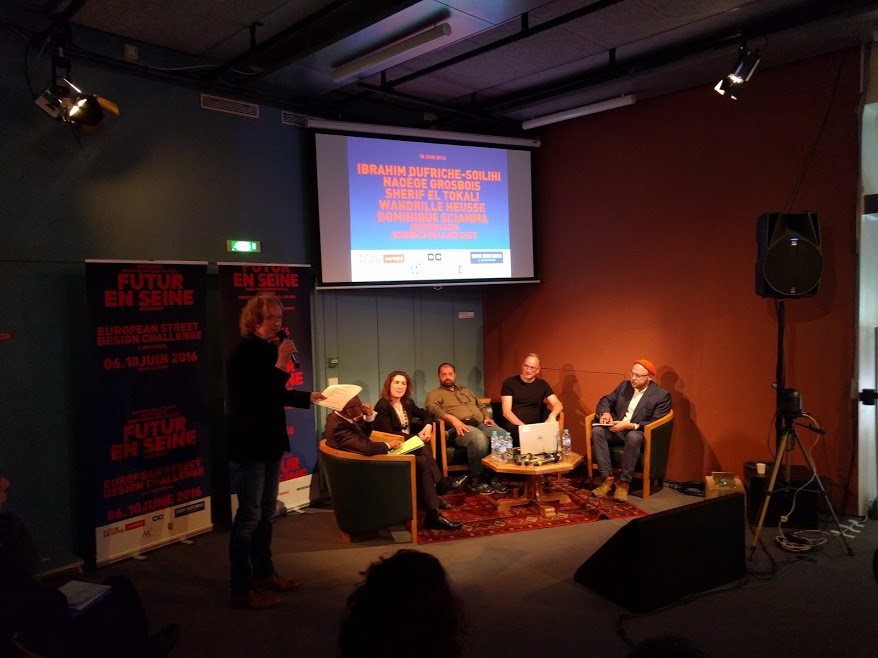Within the framework of the Futur en Seine festival, the ESDC entered its sixth year in Seine-Saint-Denis. In 2016, the ESDC ran from the 6th to 10th June under the heading « Creating playful spaces in the urban environment ». The design teams focused their efforts on the commune of Montreuil, a dynamic commune with a relatively young population, a rich demographic mix and a flourishing cultural life.
Seven top international teams of designers confirmed their participation: London, Rome, India, Linz, Netherlands, United Nations Development Program, Egypt and, for the first time at the ESDC, a team from the Colab/Auckland University of Technology in New Zealand. They were joined by three teams of young designers from Strate School of Design, Sèvres in the Ile de France.
The Challenge

The Mairie identified two contrasting target areas for the ESDC 2016 as being in urgent need of revitalisation:
Croix de Chavaux: The area around the Croix de Chavaux, a central traffic hub for commuters and locals, is in urgent need of development: more thought must be given to the requirements of pedestrians rather than cars, and the available space must be redesigned to meet more “people-centred” aspirations and needs.
Les Ruffins: The extension of the T1 tram, connecting Montreuil to Saint-Denis is presently being constructed. The terminal stop of the extension will be at Les Ruffins in the area of the present market. Particularly in this context, but also with regard to the quality of life in general, there is a perceived need for proposals for development on a social and cultural level in the Les Ruffins.
The Challenge started on the afternoon at 3pm on Monday, 6th June, with a coach tour of the town, visiting particular key locations, including the target design areas of Croix de Chavaux and Les Ruffins. The tour was followed by a meeting at the Mairie with representatives of Montreuil and the target design areas, including local community managers and entrepreneurs. Ibrahim Dufriche-Soilihi, deputy mayor responsible for economic development, then officially opened the Challenge.
For the next three, highly intense days, the teams used ICI Montreuil as their design base, venturing out from time to time to learn more about the areas and for discussions with local residents and community managers. Most teams focused quickly on one target: either Croix de Chavaux or Les Ruffins. Initially, the organisers and mentors supported the design process with formal brainstorming exercises – defining values for the redesign, creating emotional and mental maps of the areas. Subsequently, the teams continued their brainstorming and conceptual development of their solutions, also beginning work on their eventual presentations.
On Thursday, 9th June on mid-afternoon, the teams made their way to the Mairie of Montreuil for the presentations to the international jury, which included local and departmental government representatives, and invited specialists from the international Creative Industries and Design.
THE PRIZE WINNERS
The overall quality of the design proposals was without doubt the best to date in the ESDC. The eventual winners were as follows:
1st Prize: Trophée du Conseil Général de Seine-Saint-Denis
Colab / AUT, New Zealand
Drawing inspiration from the city of Christchurch, and how locals there responded to losing the heart of the city after the recent earthquake by building temporary spaces, the New Zealand team developed a plan for an incremental approach to designing the space around Les Ruffins. The concept included local artists and craftspeople constructing temporary objects for the space, and allowing the public to explore how they would like to use the space in future.
2nd Prize
Ecole Strate, Sèvres, Team 1
The Ecole Strate solution aimed to add value to the « blooming » of a new space of conviviality and culture at Les Ruffins, while awaiting for the tramway’s opening. The project is divided in four phases: communication, co-creation, construction and usage of the new space. By the end of the construction, the square would become a co-created open and cultural place.
3rd Prize
Design Schools of Rome
« Take a Breath », the Rome solution, tackled the issue of “regeneration” by implementing minimum land management, and redesigned the Place Jacques Duclos, at Croix de Chavaux as a “breathing organism” as people determine a flux that is reflected on the graphic of the square and on the street lighting in varying intensity, driven by smart sensors.
THE EVENT

On Friday, 10th June, the European Street Design Challenge culminated in an event, co-organised with the Department of Seine-Saint-Denis, to showcase the urban design solutions, created by the international design teams in Montreuil over the preceding three days. In addition, local and international experts were invited to discuss one of the driving concepts behind the creation of the ESDC: Participative Design as a catalyst for Social Entrepreneurship. The event brought together representatives from government, the United Nations, and professional designers in a round table to discuss effective ways of collaboration in maximizing the use of participative design as a catalyst for social entrepreneurship on a local, national and international level. From the discussion, it was clear that participative design was taking on a new social role – as a vehicle for citizen engagement in the local communes, as a tool used for active social progress by the United Nations, and as a « magnet » for creativity across economic, social and cultural layers.